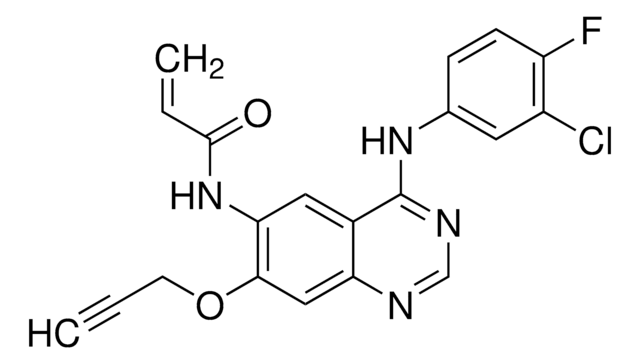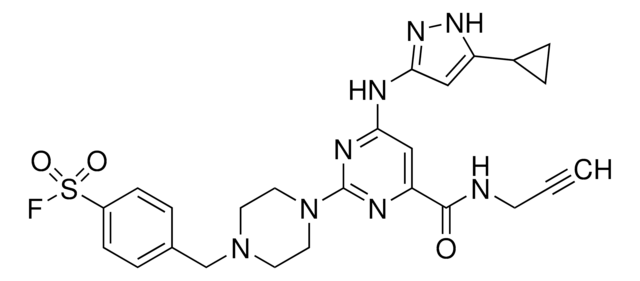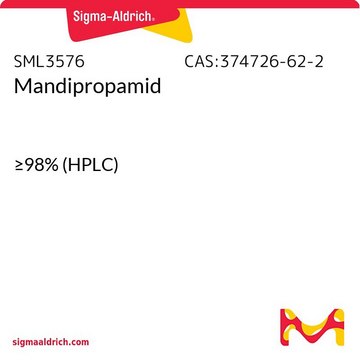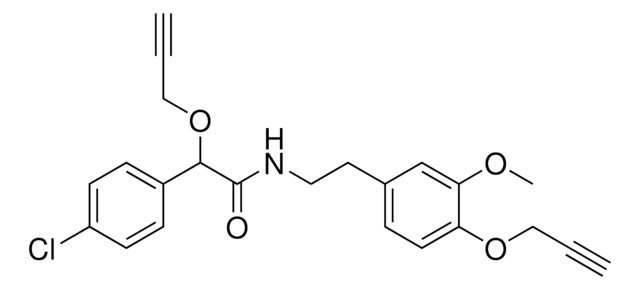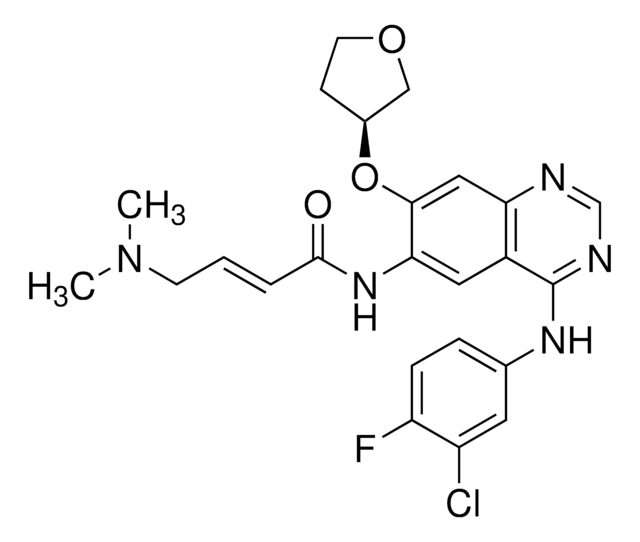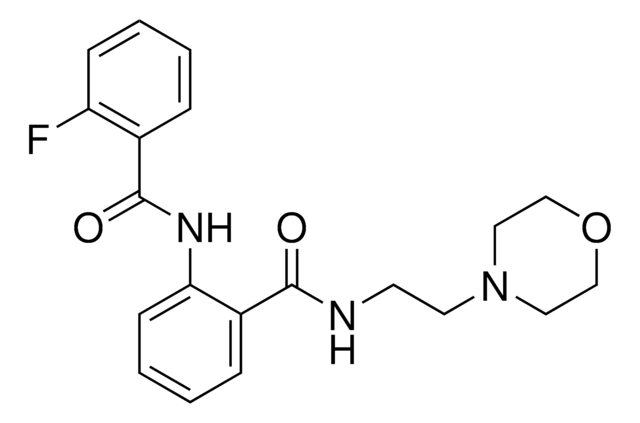PZ0243
PF-06672131
≥95% (HPLC)
别名:
(2E)-N-[4-[(3-Chloro-4-fluorophenyl)amino]-7-(2-propyn-1-yloxy)-6-quinazolinyl]-4-(dimethylamino)-2-butenamide, (E)-N-(4-((3-Chloro-4-fluorophenyl)amino)-7-(prop-2-yn-1-yloxy)quinazolin-6-yl)-4-(dimethylamino)but-2-enamide, Probe 8
About This Item
推荐产品
质量水平
方案
≥95% (HPLC)
表单
powder
颜色
white to beige
溶解性
DMSO: 5 mg/mL, clear (warmed)
储存温度
room temp
SMILES字符串
FC(C=C1)=C(Cl)C=C1NC2=NC=NC3=CC(OCC#C)=C(NC(/C=C/CN(C)C)=O)C=C32
InChI
1S/C23H21ClFN5O2/c1-4-10-32-21-13-19-16(12-20(21)29-22(31)6-5-9-30(2)3)23(27-14-26-19)28-15-7-8-18(25)17(24)11-15/h1,5-8,11-14H,9-10H2,2-3H3,(H,29,31)(H,26,27,28)/b6-5+
InChI key
XZAHPCGWUZFHBI-AATRIKPKSA-N
生化/生理作用
警示用语:
Warning
危险分类
Acute Tox. 4 Oral - Eye Irrit. 2 - Skin Irrit. 2 - STOT SE 3
靶器官
Respiratory system
储存分类代码
11 - Combustible Solids
WGK
WGK 3
闪点(°F)
Not applicable
闪点(°C)
Not applicable
历史批次信息供参考:
相关内容
The Cravatt group develops innovative technologies to understand enzyme roles in disease, focusing on activity-based protein profiling.
我们的科学家团队拥有各种研究领域经验,包括生命科学、材料科学、化学合成、色谱、分析及许多其他领域.
联系技术服务部门